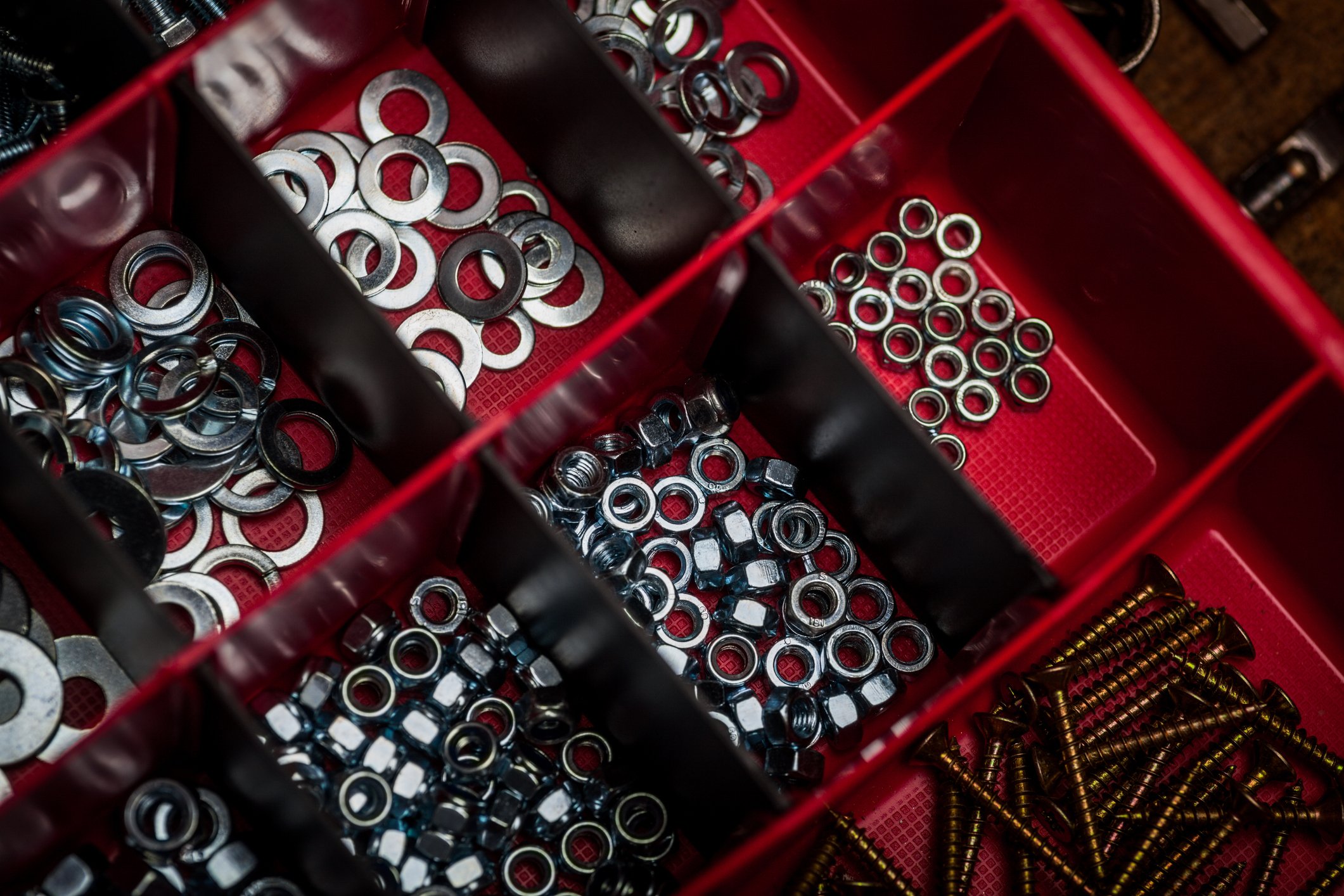A cage nut is a specific type of fastener that is used for protecting equipment from stripped threads and that allows for convenient mounting of server rack equipment.
A cage nut consists of a free-floating threaded square nut, contained within a spring steel cage. The spring steel cage features two mounting legs — or wings — that, when pressed together, allow the nut to clip into the square hole and lock the fastener in place within the rack hole.
Other names for cage nuts include: captive nuts, clip nuts, retainer nuts, rack nuts, and floating nuts, but “cage nuts” is the most universally recognized name, as it helps to explain how this particular category of fastener works compared to its counterparts.
Common Uses for Cage Nuts
Cage nuts are commonly used to mount lighting systems, electrical equipment or other manufacturing instruments onto rail racks. The cage nut clips into the rack’s square mounting hole and positions the nut toward the inside of the rack. The nut is typically loose, or “free-floating” in the cage (hence, the alter-ego of floating nut), to allow for adjustments when installing the screw. This configuration allows flexibility in mounting and assembling components.
One key benefit to using cage nuts over other standard fasteners is that they can be replaced if the threaded hole is stripped. They are also known for their strength and durability.
When it comes to installation, cage nuts can be tough on the installer’s fingers when trying to install or uninstall them with bare hands. Experienced installers will often use what’s known as a cage nut tool to make installation easier and to protect the hand from injury.
An important additional consideration when choosing a cage nut is purchasing the corresponding screw that matches the cage nut in question. For example, it is recommended to pair a 3/8-16 cage nut with a 3/8-16 screw. This prevents the installer from selecting the wrong sized cage nut. To be 100% sure that you’ve selected the appropriate nut and screw, do a quick test to make sure the screw and cage nut fit together before beginning the installation process.
The sizing of cage nuts is based on three components:
- the screw thread
- the panel thickness and
- the mounting hole
Always double-check measurements before making your purchase.
The Advantages of Using Cage Nuts
There are many advantages of using cage nuts over other types of fasteners, such as:
- They snap directly into square rack holes.
- Cage nuts are easily installed, with no special tools or skills required, eliminating the need for special operations.
- The nut floats freely within the spring-steel cage, which offsets potential hole misalignment.
- Cage nuts can be easily popped out and replaced, when necessary.
- Cage nuts are the Ideal solution when removal or installation of rack components might cause holes to strip.
- The cage nut combines the flexibility of a spring steel cage with the strength of a threaded nut.
MF Supply stocks the complete range of available cage nuts, including cage nuts at imperial size 6-32 up to ½-13, Metric M5 and M6, stainless steel variety, steel-zinc-plated cage nuts, and Tinnerman alternatives.
For over 50 years, MF Supply has been a trusted supplier of fasteners and electronic hardware to OEMs, machine shops, manufacturers, and assemblers of machines and instruments in New Jersey, the greater NYC Metropolitan area, and beyond. To learn more about how to select the right fastener for your needs, visit www.mfsupply.com for an overview of the complete range of commercial and mil-spec fasteners available.


